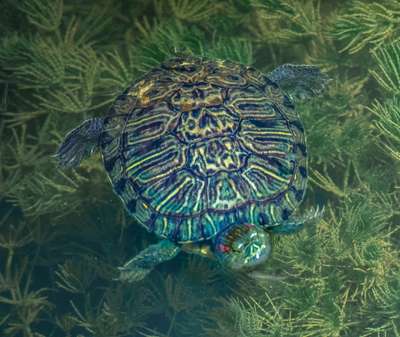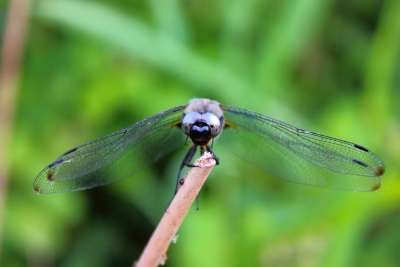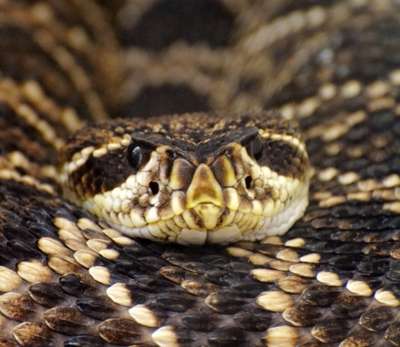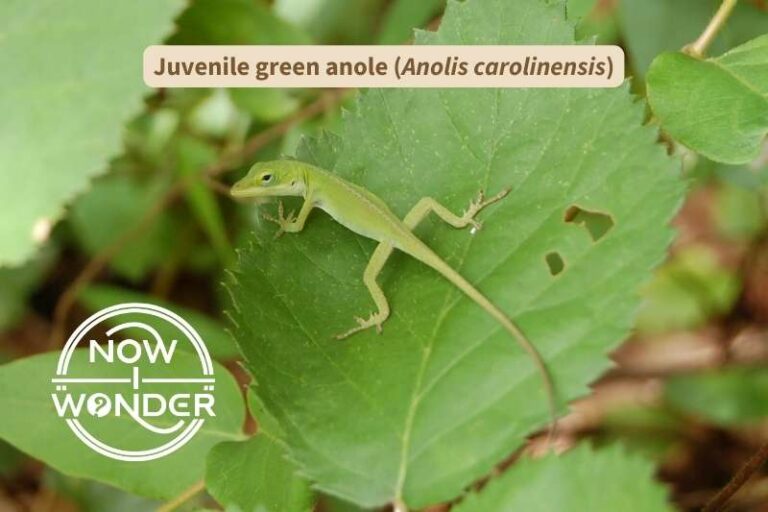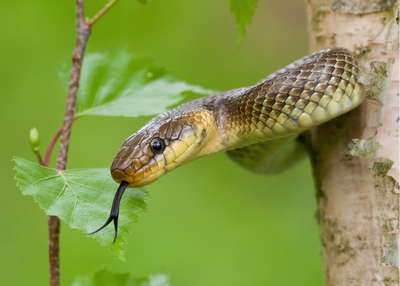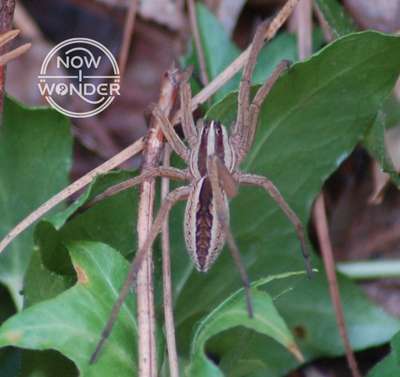Horace’s Duskywing skippers are dark butterflies that live in North Carolina year-round. Three broods of adults fly May through September; caterpillars overwinter in leaf litter. They perch with their wings outstretched, like sunny areas along oak woods, and have a quick, darting flight style.
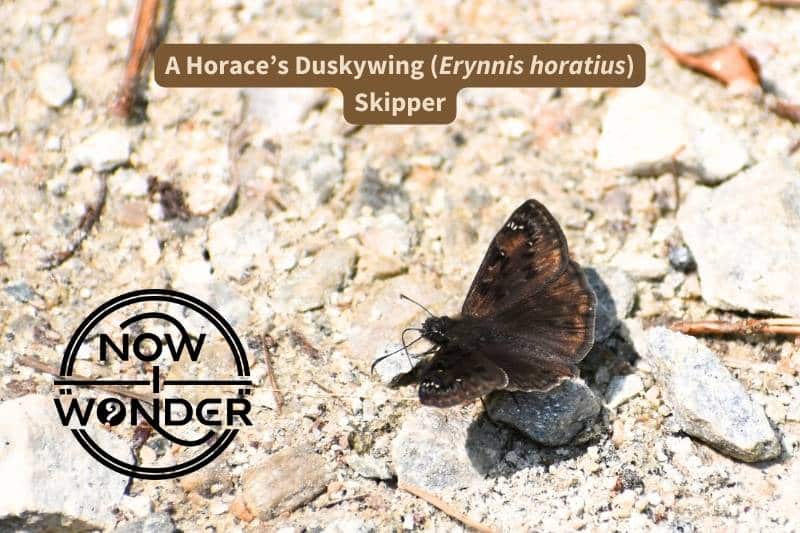
Fun Facts About Horace’s Duskywing Skipper Butterflies To Wow Your Friends
- Horace Duskywing Skippers are often mistaken for moths, thanks to their dull brown coloration and habit of spreading their wings out flat when perched.
- Horace Duskywing Skippers are called “skippers” because of their quick, darting flying style, called “duskywings” because of their dull, brown coloration, and “Horace’s” after a Roman poet (many duskywing species are named after Roman poets) (Glassberg, 1999).
- Horace Duskywing Skippers do not sequester toxic chemicals from their food plants in their body tissues like some other butterfly species. They are entirely edible for insect-eating predators like birds, spiders, assassin bugs, and green anoles.
- The leading edge of male Horace Duskywing Skipper forewings are folded over into a structure called an “costal fold”. The “costa” is the vein that runs along the front margin of the wing. The fold creates a pocket that concentrates special chemicals called “pheromones” which which are created by special “androconial scales” found on the wings of certain male butterflies. The pheromones waft into the air and attract females.
How Are Horace’s Duskywing Skipper Butterflies Classified?
| Kingdom | Animalia |
| Phylum | Arthropoda |
| Class | Insecta |
| Order | Lepidoptera |
| Family | Hespiriidae (“true skippers”) (sub-family Pyrginae, “spreadwing skippers”) |
| Genus species | Erynnis horatius |
How Do I Know I’m Looking at a Horace’s Duskywing Skipper Butterfly?
Appearance of Horace’s Duskywing Skipper Eggs
Horace Duskywing Skipper (Erynnis horatius) eggs are relatively large, laid singly (Wagner, 2005), and start out green, then turn pink as the larvae grow (Pyle, 1981).
Appearance of Horace’s Duskywing Skipper Caterpillars / Larvae
Horace Duskywing Skipper (Erynnis horatius) caterpillars have hairy, light green bodies, and very large red, orange, or yellow heads with three yellow spots on either side (Wagner, 2005). Their body shape is distinctive; they look like they have necks, thanks to a reduced first body segment.
Duskywing Skipper caterpillars change color as the summer progresses to mimic the color of the leaves upon which they feed (Wagner, 2005). They start out green, then slowly turn reddish as the oak leaves lose their green chlorophyll and assume their reddish-orange autumn colors.
The caterpillars hide from predators inside little shelters constructed from leaves (usually oak leaves). They have a unique method for making these shelters. First, a caterpillar makes a flap by chewing through the leaf in two parallel lines. Then, it pulls the flap up and over to form a pocket, then anchors the raw edges with spun sill (Wagner, 2005).
When ready to metamorphose into adult butterflies, Horace Duskywing Skipper (Erynnis horatius) caterpillars form dark green or brown chysalids (Pyle, 1981).
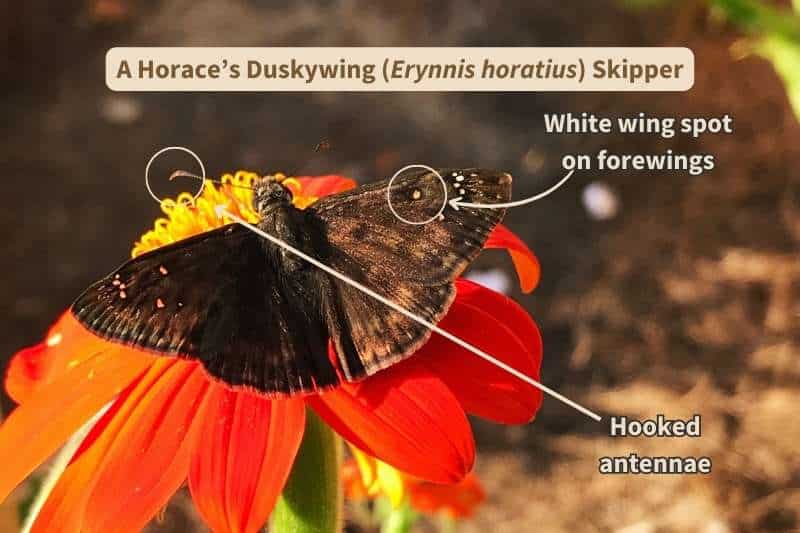
Appearance of Adult Horace’s Duskywing Skipper Butterflies
Adult Horace Duskywing Skipper (Erynnis horatius) butterflies are small butterflies, with wing spans around 0.14 – 0.2 inches (3.5-3.8mm). Both males and females are mostly brown, with heavy, furred brown bodies, only a few tiny white spots on their forewings, and large, blurred dark brown spots along the margins of their wings that blend into the overall wing color. Females are more patterned than males but still have only subtle tones of dark tan and sable.
Unfortunately for amateur naturalists, adult Horace Duskywing Skipper butterflies are easy to identify as “skippers”- and even as “spreadwing skippers- but extremely difficult to distinguish between all the other duskywing skipper species in genus Erynnis.
All skipper species have a distinctive curved hook on the end of their antennae (called an “apiculus”); the antennae of non-skipper butterflies end in blunt clubs. “Spreadwing skippers” hold their wings outstretched on a single plane when perched like many other butterflies; other skippers fold their wings so that the edges kink in different directions.
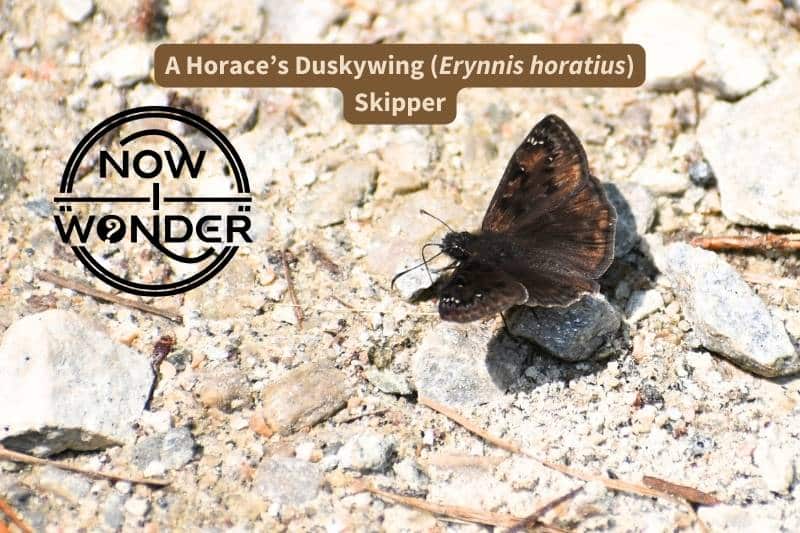

Horace’s Duskywing Skippers (Erynnis horatius) are part of the “duskywing skipper” subfamily Pyrginae. This subfamily contains several North Carolina species, many of which look almost exactly alike. For example, the only visual difference between a Horace skipper and a species called Juvenal’s Duskywing Skipper (Erynnis juvenalis) is that the Juvenal’s Skipper is slightly more gray than brown. But the difference is extremely subtle and hard to determine when observing a single individual in the wild.
When Can I Find Horace’s Duskywing Skipper Butterflies in North Carolina?
In North Carolina, adult Horace Duskywing Skippers (Erynnis horatius) fly between May and October, and have approximately three broods every summer. This species has a longer flight season than other duskywing skipper- like the Juvenal’s Skipper (Erynnis juvenalis), which only flies for the first few months of spring.
The last brood of caterpillars drop off their host plants and take refuge from cold winter temperatures in leaf litter (Pyle, 1981). In spring, the caterpillars respond to warming temperatures and form chrysalids within which they metamorphose, then emerge as the spring season’s first adults.
Where Should I Look to Find Horace’s Duskywing Skipper Butterflies in North Carolina?
Adult Horace Duskywing Skippers (Erynnis horatius) like warm, sunny spots near woodlands, especially woods with oak trees. This species adapts to a wide variety of natural and altered habits, which may be why it is one of the more common duskywing skipper encountered by amateur naturalists.
Males perch on low vegetation and sometimes like to puddle at damp sand or gravel to drink water and obtain mineral salts.
Horace Duskywing Skipper caterpillars are hard to find because they feed at night and hide during the day within leaf shelters (Wagner, 2005).
What Do Horace Duskywing Skipper Butterflies Eat?
Horace’s Duskywing Skipper Butterfly Larval Food Plants
Horace Duskywing Skipper (Erynnis horatius) caterpillars feed on a variety of oak trees (genus Quercus) found in North Carolina, especially Live Oak (Q. virginiana), Turkey Oak (Q. laevis), Water Oak (Q. nigra), and Post Oak (Q. stellata) (Daniels, 2003).
Adult Horace’s Duskywing Skipper Butterfly Food
Adult Horace Duskywing Skipper (Erynnis horatius) butterflies feed on flower nectar and visit a wide variety of natural and cultivated species, including many grown in home gardens.
References
Daniels, Jaret C. 2003. Butterflies of the Carolinas. Cambridge, MN: Adventure Publications, Inc.
Glassberg, Jeffrey. 1999. Butterflies Through Binoculars: The East. New York, NY: Oxford University Press.
Pyle, Robert Michael. 1981. National Audubon Society Field Guide to Butterflies: North America. New York, NY: Alfred A. Knopf.
Wagner, David L. 2005. Caterpillars of Eastern North America: A Guide to Identification and Natural History. Princeton, NJ: Princeton University Press.

